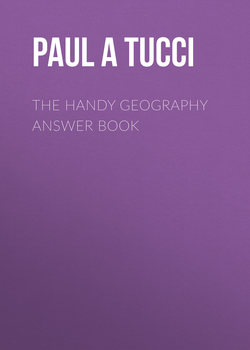Читать книгу The Handy Geography Answer Book - Paul A Tucci - Страница 9
На сайте Литреса книга снята с продажи.
ОглавлениеIntroduction
What is so surprising about geography is how dynamic our world is and how it changes so quickly. It is profound to see just how much of the information contained within the previous edition has changed in just a few short years. Immutable facts of history are being challenged every day by scholars around the world. New artifacts are being discovered, and new interpretations of old texts are constantly being published. Technological advances have made measuring many things much more accurate and precise. We are now better able to see our world with greater clarity. Simultaneously, the enormous convergence of technology like software apps and powerful mobile devices, as well as the ubiquitous qualities of information in all its forms and formats, has brought access to geography and nearly all of its facets to billions of people. This is in sharp contrast to a much different world 500 years ago, when many people were convinced that the world is flat with edges not too far beyond the next pasture or village.
Things have gotten better around the world, but in some cases worse. Our previous list of the most polluted cities in the world changed in a surprising way. The people of the world became healthier, lived a bit longer, became more literate, donated more money, re-engineered rivers, and preserved forests; the list is endless. Centuries-old disputes over geography still spawn conflict and resolution around the world. A convergence of technology and political geography causes a country like China to alter the map of the world by building tiny islands in a nearby sea.
Interesting companies that are creating new ways to use maps and to visualize data are fueling our renewed interest in geographical concepts. Google’s Street View lets users drill down to see mailboxes at specified GPS coordinates, or to see the front door of their next door neighbor’s house, something that was inconceivable only a few years ago.
A friend recently gave me a geography textbook from 1890. The city of Los Angeles, which is one of the largest metropolitan areas in the world today, had a population of approximately 51,000 people. There were only three cities in the U.S. with populations greater than one million. Today, there are ten. People had access to very little information beyond what they garnered from this little geography textbook in their first year of high school. Many countries that exist today were not on the map at that time, and many colonies that had been established centuries before were still in existence. Great natural disasters occurred in the nineteenth century, but information about them would take months before they would be in the national consciousness. Today, billions of people are made aware of nearly any reported event, anywhere in the world, in seconds.
This access to information will hopefully translate into a future in which the study of geography will be revived at all levels of our educational system, and people will remember a time when a geography department was started at their university, instead of when it was closed, as in my case.
Our mission for this edition of The Handy Geography Answer Book is to provide you with a helpful grid on the field of geography, and populate the chapters of the book with really interesting questions and answers that make the field of geography come to life. Perhaps it will inspire an argument or two, or make you want to read more about the subject. The book will capture you no matter what your background or experience is.
